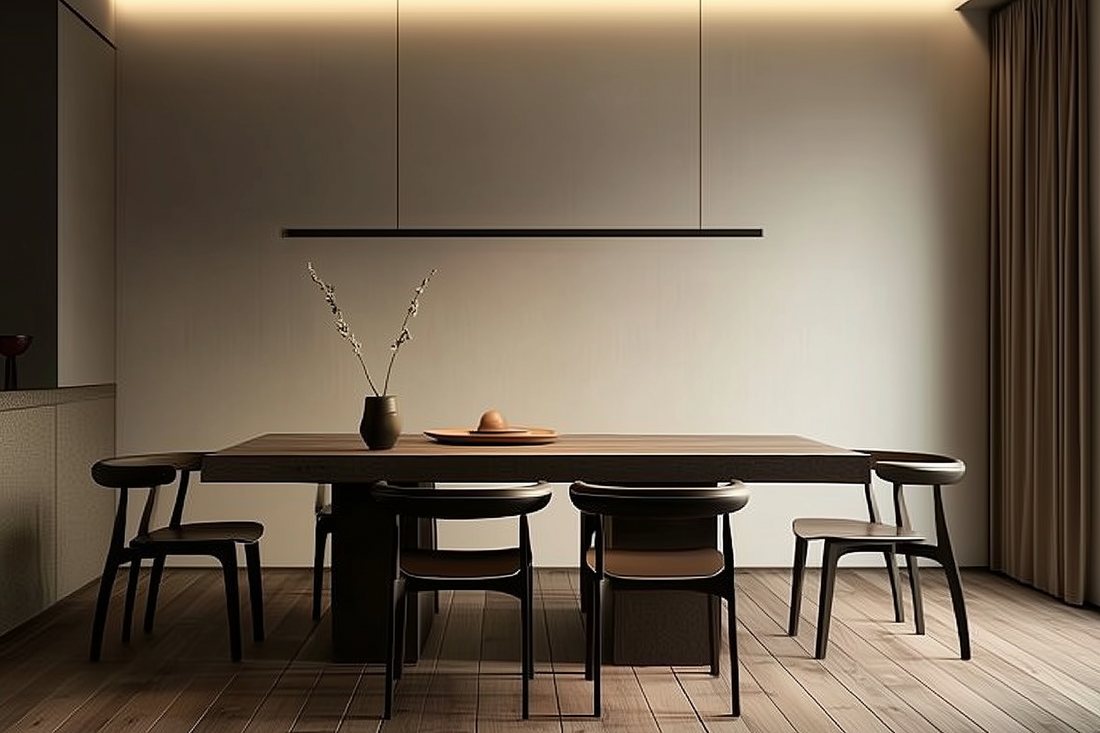
Framing the Focal Point: Using Profile Lights for Bold Accent Walls
Share
Interior decor has always been all about balance, between light and shadow, texture and tone, bold statement and subtle sophistication. But if there is one thing that can easily turn a bland surface into a dramatic design statement, it is lighting. Specifically, profile lighting has become a designer's trump card to frame focal points and create accent walls that are iconic.
Accent walls have been around for ages. Designers have, for a long time used paint, design, or textured finishes such as wood and stone to make a special feature of a section in a room. However, with LED profile lights and linear lights, accent lighting has entered a whole new dimension. These lights don't just make what's present visible, they redefine the surface itself, sculpting depth, dimension, and drama into the wall.
So, how do profile lights take accent walls to the next level? Let's dig into the craft behind them and why Lafit Lighting's recessed profile lights and surface profile lights are the ideal option for anyone seeking to frame their focal points with style.
Why Accent Lighting Matters More Than Ever
Lighting is no longer an afterthought in contemporary interior design. It influences mood, defines hierarchy, and enhances day-to-day experiences. Accent lighting, in particular, is a crucial instrument for pointing the viewer's focus to those spaces and surfaces that are most important.
Picture a living room where the television wall softly glows from behind, appearing to float. Or a restaurant with vertical slivers of light slicing through a textured wall and bringing rhythm and drama. In either situation, the lighting is quiet but strong, bringing the wall to a work of art.
Profile lights on accent walls do not just light; they narrate. They emphasize architectural elements, accentuate texture, and cause spaces to feel layered and dramatic. And since LED profile lights come in adaptable, slim formats, they quietly integrate into modern minimalist spaces and adventurous, expressive spaces alike.
The Power of Profile Lights on Accent Walls
What makes profile lights so effective on accent walls is their versatility. Here's how they beautifully frame focal points:
1. Creating Depth and Dimension
Installed either horizontally or vertically across a wall, recessed linear lighting creates shadows and highlights that bring flat planes to life. They can draw attention to the grooves of wood panels, emphasize stone texture, or merely focus attention on a central feature such as artwork or shelving.
2. Framing Architectural Features
Profile lights are like picture frames for your interiors. By framing niches, partitions, or the edge of a feature wall, they quietly direct the viewer's eye to the desired focal point.
3. Blending Drama and Sophistication
In contrast to their harsh spotlights, profile lights deliver even, diffused light. This makes them perfect for producing a moody yet elegant environment. Imagine the difference between yelling for attention and quietly demanding it.
4. Design Flexibility
From unobtrusive recessed installations that melt into the wall to assertive surface-mounted fixtures that double as design accents, profile lights comply with the aesthetic story. Their modularity makes them friendly in straight runs, geometric configurations, or even novel customized configurations.

Recessed vs. Surface Profile Lights
When the issue is accent walls, whether to use recessed profile lights or surface profile lights can make or break the overall aesthetic. Lafit Lighting has both, providing homeowners and designers with the ideal choice for their desired vision.
Recessed Profile Lights
These lights are recessed directly into the wall, providing a flush finish. This produces clean, contemporary, and sophisticated results that are ideal for minimalist interiors where lighting must be as much a part of the architecture as possible. For feature walls, recessed profiles are especially good at defining niches, shelving units, or producing vertical strips that help extend the feeling of space.
Surface Profile Lights
When a wall structure cannot be altered, surface-mounted solutions step in. Anything but a compromise, surface profile lights bring their own elegance by serving as design elements that can be seen. They are perfect for dramatic accent walls where the light fixture itself is part of the statement.
Both share the energy efficiency of LED profile lights, providing not only beauty but also durable, energy-saving performance.
Designing Bold Accent Walls with Profile Lights
Lafit Lighting's surface profile lights and recessed profile lights are the epitome of design and technology. Crafted to perfection, they protect LED strips from damage and dust, providing longevity while delivering seamless light.
For minimalist spaces, recessed profiles provide smooth illumination that is more architectural than decorative in nature.
For statement designs and bold designs, surface profiles provide sculptural presence combined with lighting.
With either option at hand, homeowners and designers can design accent walls that not only serve as a partition but also a point of emphasis in the room as a whole.
Conclusion: Light as the Frame of Design
Walls are no longer boundaries in interior design today, but canvases to be brought to life. Accent lighting using profile lights is the brush that outlines, defines, and dramatizes such canvases. Whether it is the quiet sophistication of recessed profiles or the dramatic assertion of surface-mounted fixtures, linear lights bring walls to life that cannot be achieved through paint and texture.
With Lafit Lighting's range of LED profile lights, any accent wall can be turned into a dramatic centerpiece, marrying style, functionality, and energy efficiency all at once. For when light tells the story, walls no longer remain inert, but begin talking design.


